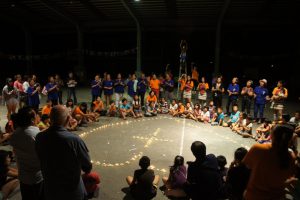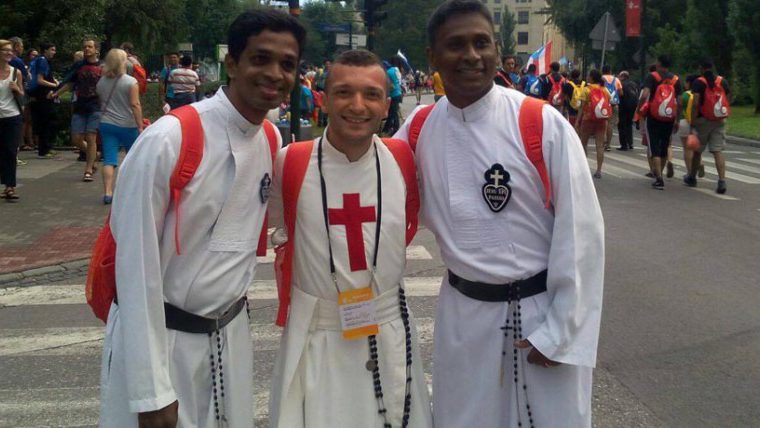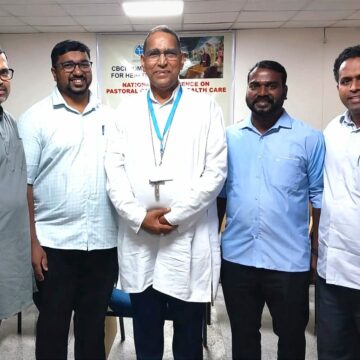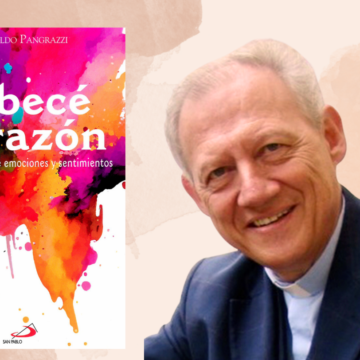di Saverio Cannistrà, ocd
 First of all, I would like to confess how embarrassed I am standing on this side of the table, in other words, on the side for those who speak, present and communicate, instead of those who listen. Although I am obviously honoured to have been invited to speak, dear brothers, I must however sincerely say that I am afraid that I have nothing to say. There are three reasons for this:
First of all, I would like to confess how embarrassed I am standing on this side of the table, in other words, on the side for those who speak, present and communicate, instead of those who listen. Although I am obviously honoured to have been invited to speak, dear brothers, I must however sincerely say that I am afraid that I have nothing to say. There are three reasons for this:
- Because of the those here in assembly, who know more than me:
- Because I find myself in the situation of being much more a researcher than a person with knowledge;
- Because of the theme, or at least how it is formulated
Seeing that I am unable to eliminate the first two difficulties, I made an effort to summarise the third – this required a longer process – which I will try to synthesise, hoping that I don’t take advantage of your patience too much.
- A linguistic problem
I was saying that when I was asked to tackle the theme of “radicality and prophecy in consecrated life”, for a long time I asked myself what was exactly expected of me. It was clear to me that I was supposed to speak on consecrated life. However, the dual concept of radicality and prophecy was not so clear. This was due to the fact that no one had explained what was intended by these two terms, and also – and even more so – because it was not clear (at least not to me) what type of logical connection presumably exists between the two (radicality and prophecy, from radicality to prophecy, not radicality rather prophecy, and finally, “radicality in prophecy”).
It is not the first time that I find myself in such a puzzling situation. Today, when we are asked to “think of life”, in other words to reflect upon life to try and understand the structures of its sense, semantic fields that intertwine and intersect and incoherence and grey area, we often run into a preliminary problem, which is represented by language and communication. In fact, in order to speak of things we use words, but – as linguistics and semiotics have been teaching us for more than a century – the relationship between the words (signs) that we use and the reality (objects) to which we refer is not direct. The word or the sign reaches an object only through its “interpretation”, which we usually call “meaning” (many of us will remember the famous semiotic triangle of Ogden and Richards in their book of 1923, The Meaning of Meaning). This is the way to make the process of codification of the sender and the decoding of the receiver possible. In an attempt to simplify at best, one could say that the sender starts from an idea, and “thinks it”, in other words, translates it into a concept, which is finally expressed through graphic and phonetics signs. The receiver, in order that communication work, must do the same the other way around, in other words starting from the signs and the words, perceiving the conceptual interpretation, thus identifying the object.
Correctly decrypting the meaning of a sign is a phenomenon that is more or less evident or predictable in two forms of language: everyday language (therefore reference to the dictionary is valid, in other words, the current use of a language) and that of a technical language, where every word corresponds to a precise codified meaning. They are in some way two extremes: one is a natural language, maternal, that we use “without thinking”, and the other is an artificial language, for which each word is like an abbreviated number of a logic to which it refers.
 How must and how can we speak of consecrated life today? It seems clear to me that there is no technical language, universally accepted, as was once the case with philosophy and theology in school (for which each exhaustive explanation began with the explicatio termino rum that was done strictly in Latin). That language does not exist because the system that sustained it and to which it corresponded no longer exists.
How must and how can we speak of consecrated life today? It seems clear to me that there is no technical language, universally accepted, as was once the case with philosophy and theology in school (for which each exhaustive explanation began with the explicatio termino rum that was done strictly in Latin). That language does not exist because the system that sustained it and to which it corresponded no longer exists.
However, there is still the “poor” alternative of everyday life, which is surely practicable, seeing that Jesus did so in the Gospel. It is a way of speaking through parables, images and stories of life experience. This type of linguistic game allows one to avoid the obstacle of conceptualisation, or to better say, of the communicative agreement on the concepts we use. For example, a dear brother of mine, Fr. Miguel Márquez gave a talk to religious men and women on the topic of contemplative life during the closing week of the Year of Consecrated Life, using a non-conceptual language: he used images, told stories on episodes of life, presented some figures, proposed the “seven dances”, invited everyone to stay in silence and gave his blessing. It represented an excellent example of communication: the message went from the sender to the receiver, so enriched with nuances that were not so easy to envisage, thanks to the competent use of icons and symbols (that in this case I separated from the signs, precisely for their immediate evocative connection to the object).
Most people – and in any case me, who does not stand out for having lots of imagination or literary creativity – must nevertheless pursue a sort of middle way, between everyday language and a technical one, and in other words the way of a conceptual language that builds up progressively and with difficulty, attempting to get the audience involved in an alliance or communicative complicity. I would say that this is very difficult in the face of what we find today when we are forced to think and speak about our lives: step by step we must build up the stairway that we wish to climb up or down.















Camillians on Facebook
Camillians on Twitter
Camillians on Instagram